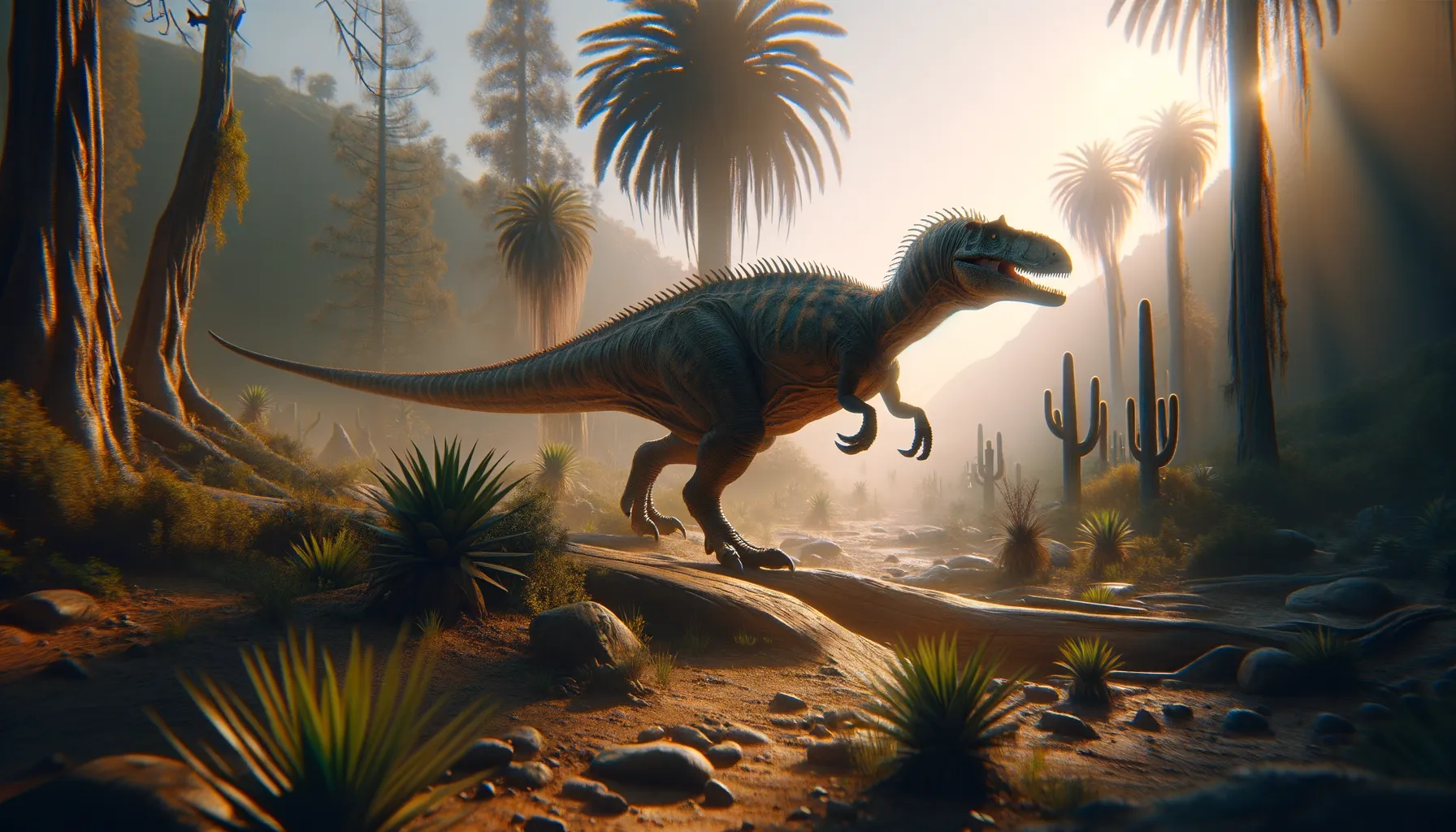
Berberosaurus
Swift predator of the Jurassic landscapes.
Period
Jurassic
Length
About 5 meters long.
Height
Approximately 1.5 meters at the hips.
Weight
Estimated around 400 kilograms.
Berberosaurus was a medium-sized theropod dinosaur that roamed the terrains of North Africa during the Early Jurassic period. With a build adapted for swift movement, it likely occupied a niche as a nimble predator. Although not one of the largest dinosaurs, its fossil discoveries have provided valuable insights into the evolution of early theropods, helping scientists map out the intricate lineage of these fascinating creatures.
Diet
Berberosaurus was a carnivore, preying on smaller animals within its ecosystem. Its teeth suggest it had a diet primarily consisting of meat, possibly scavenging when necessary.
Hunting
It likely relied on its speed and agility to catch prey, using its strong jaws to deliver a swift bite. Hunting could have been a solitary activity, but opportunistic group hunting cannot be ruled out.
Environmental challenges
Living in a dynamic environment, it faced changes in climate and resources. Shifts in flora and fauna would have impacted food availability. Competition with other predators would have been another challenge, necessitating adaptation for survival.
Speed
Likely a fast runner for its size.
Lifespan
Probably around 20 to 30 years.
First discovery
First discovered in the mid-2000s in North Africa.
Fun Facts
- Berberosaurus is a lesser-known dinosaur that roamed what is now North Africa during the early Jurassic period over 180 million years ago.
- This dinosaur's name, Berberosaurus, means 'Berber lizard,' linking it to the indigenous Berber people of Morocco where its fossils were found.
- Berberosaurus was a theropod, a type of bipedal dinosaur known for having hollow bones and three-toed limbs, which makes it related to the famous Tyrannosaurus rex.
- Despite its fearsome relatives, Berberosaurus was relatively small, measuring about 5 meters (16 feet) long, which is modest compared to some of its giant cousins.
- Fossils of Berberosaurus were first discovered in the late 1990s in the High Atlas Mountains of Morocco, an area rich in early dinosaur discoveries.
- Berberosaurus helps paleontologists understand more about early theropods and how these dinosaurs evolved and spread across what was then the supercontinent Pangaea.
Growth and Development
Young Berberosaurus individuals likely grew rapidly in their early years to avoid predation. As juveniles, they might have had different markings or colors compared to adults. Fossil evidence suggests they reached maturity relatively quickly.
Habitat
This dinosaur inhabited semi-arid regions with seasonal rivers. Vegetation consisted of conifers and ferns, providing both cover and hunting grounds. Such habitats supported a variety of dinosaur species, both herbivorous and carnivorous.
Interaction with other species
Berberosaurus was part of a diverse ecosystem, interacting with various herbivores and competing predators. Sometimes, disputes over territory or food might arise with its contemporaries. These interactions could influence its behavior and hunting strategies.
Natural lifespan
Its natural lifespan was around 25 years.
Reproduction
As a theropod, it likely laid eggs in nests, possibly concealed among vegetation. Parental care is uncertain, but some evidence suggests minimal guarding of the nest. Hatchlings would have been vulnerable, requiring rapid growth to avoid predators.
Social behaviour
Berberosaurus might have been a solitary creature, although occasional group interactions could occur. Its social behavior could vary based on resource availability and predatory pressure. Vocalizations may have played a role in communication.
Fossil locations
Fossils of Berberosaurus have been found in Morocco, offering crucial information about its distribution. These discoveries provide important links to understanding African dinosaur fauna during the Jurassic. The conditions of fossilization have revealed much about its ecological setting.
